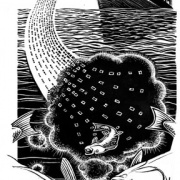Se frustra la patente sobre las calabazas con verrugas
Enviado por ETC Staff el
El Grupo ETC informó sobre una solicitud de patente (1) bajo examen en la Oficina de Patentes y Marcas Registradas de Estados Unidos (USPTO por sus siglas en inglés) en la cual la Siegers Seed Company de Holland, Michigan, reclama la invención de una “calabaza verrugosa… donde la cubierta externa incluye al menos una verruga…” El 13 de febrero 2009, la USPTO publicó su veredicto de 9 páginas(2) rechazando los 25 derechos reclamados en la solicitud.
¿Aterrorizados y derretidos?
Enviado por ETC Staff el
Más de 80 organizaciones de la sociedad civil de 20 países enviaron un fuerte mensaje a científicos reunidos en Copenhague, con una declaración conjunta que fue redactada durante el Foro Social Mundial en Belém, Brasil: “El mundo mejor que buscamos no es con geoingeniería.” La declaración se publica al tiempo que un pequeño grupo de científicos de alto perfil se reúnen a discutir ciencias climáticas en Copenhague(1), con la idea de presionar a los gobiernos a que apoyen y financien experimentos de geoingeniería en el planeta. El Grupo ETC, organización internacional de la sociedad civil con sede en Canadá, publica la declaración, que se enfoca en la fertilización oceánica, una de las más controvertidas tecnologías de geoingeniería. Los grupos que la apoyan afirman que “la fertilización oceánica y otros esquemas de geoingeniería, injustos y de alto riesgo, son una respuesta equivocada al reto que presenta el cambio climático global.”
Shock and Thaw? Civil Society says “No” as geo-engineers mount shock bid to hack the planet.
Enviado por ETC Staff el
OTTAWA, Canada –More than 80 civil society organizations (CSOs) from 20 countries sent a sharp message to scientists meeting in Copenhagen, by releasing a joint statement initiated at the World Social Forum in Belém, Brazil: “The Better World we seek is not Geo-engineered.” The statement is being released as a small group of scientists, using a high-profile platform at a climate-science meeting in Copenhagen1 , are ratcheting up pressure on governments to support and fund real world geo-engineering experiments. ETC Group, a Canadian-based international CSO, is releasing the statement, which focuses on ocean fertilization, one of the most controversial geo-engineering technologies. The groups assert that “Ocean fertilization and other unjust and high risk geo-engineering schemes are the wrong answer to the challenge of global climate change.”
Declaración de la Sociedad Civil contra la fertilización de los océanos
Enviado por ETC Staff el
Esta declaración se redactó durante el Foro Social Mundial en Belém, Brasil, en enero de 2009. El Grupo ETC la publicó el 10 de marzo de 2009, en la víspera de la discusión sobre geoingeniería en la Conferencia de Copenhague sobre Cambio Climático: Riesgos globales, retos y decisiones. La lista de las organizaciones que apoyan esta declaración incluye solo las que recibimos antes del 10 de marzo. Las organizaciones que quieran firmarla envíen un correo electrónico a veronica@etcgroup.org antes del 17 de marzo de 2009.
The better world we seek is not Geo-engineered! A Civil Society Statement against Ocean Fertilization
Enviado por ETC Staff el
This statement was initiated at the World Social Forum in Belém, Brazil in January 2009. ETC Group released it on March 10, 2009 on the eve of a geo-engineering panel at the Copenhagen Conference on Climate Change: Global Risks, Challenges & Decisions.
Since the World Social Forum last met in Nairobi in January 2007, civil society organizations from around the globe have confronted an alarming new threat to our rights and biodiversity: the threat of unjust and high risk geo-engineering schemes and specifically ocean fertilization. We are facing off against several multimillion-dollar private and government-backed projects that aim to re-engineer our climate and oceans. We will soon face other attempts to intentionally alter our soils, deserts and other ecosystems on a large scale in the name of climate protection and profit-making, including the lucrative carbon trade.


